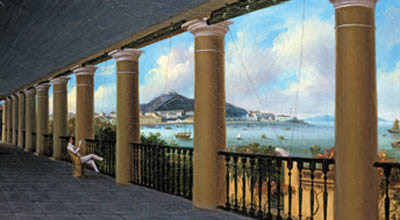I
certainly found the people very civil & accommodating & they behaved
much better than
I had any idea of & in fact as well as any people I ever
was amongst. Making proper allowance
for the manners & customs.
--
Capt. Jacob Crowninshield,
aboard America
III,
off
the coast of Sumatra, 1801
they
are all without exception a set of cheats, & this they will vouch for,
if you
should doubt
their rascality.
--
Capt. Thomas Ward, aboard Minerva,
off Canton, 1809
 |
Captain Jacob Crowninshield (1770-1808)
Courtesy, Library of Congress |
It
helps to have a historical context in which earlier American responses to the
world ground our current questions.
An
appreciation for the range of first encounters inspired my writing in
True Yankees: The South Seas and the
Discovery of American Identity (
https://jhupbooks.press.jhu.edu/content/true-yankees) and I hoped the book would challenge the
conventional wisdom that posits an American exceptionalism should rule the
world.
Colleagues have told me that they
have used the book effectively in their classrooms to raise their students’ awareness
of American encounters in the world.
For
my next project, I wanted to foreground the travelogues, correspondence,
mariner’s journals and other sources that tell these stories.
So, serendipitously, when Hackett Publishing (
www.HackettPublishing.com), based in Cambridge, Massachusetts, approached me to develop a textbook, I
jumped at the opportunity.
Yankees Abroad: Early American
Encounters in the World will describe the post-Revolution diaspora to regions
that lay “eastward of Good Hope,” or, beyond South Africa into the Indian and
Pacific Oceans. These American travelers found the world to be a complicated
place. As suggested in the journal
entries from Captains Crowninshield and Ward above, Yankees Abroad will explore the range of responses that Americans recorded
in their early ‘voyages round the world.’ The book will carry readers vicariously
into four of these regions of encounter--the Muslim world of West Asia and
North Africa, China, India, and the South Seas.
The book will situate the country’s changing perceptions of the world within
their search for opportunities, describing how merchants sought exotic markets
and trade goods, captains scouted new routes and discovered new passages,
amateur and professional scientists chased new species, artists surveyed
imaginative new scenes, and missionaries hunted for “lost” souls ripe for
conversion. At the same time, students will share in the fears of Yankee
travelers as they encountered the dangers of unfamiliar and distant lands--assaults
on their ships from pirates or cannibals, shipwreck on uncharted coasts, and,
always, the specter of tropical disease.
 |
Launching of the Ship Fame, George Ropes, 1802
Courtesy, Peabody Essex Museum |
I
hope the book will enable students to situate our current global relationships
within a historical context that sheds light
on both earlier American responses to the world and current engagements with
it.








